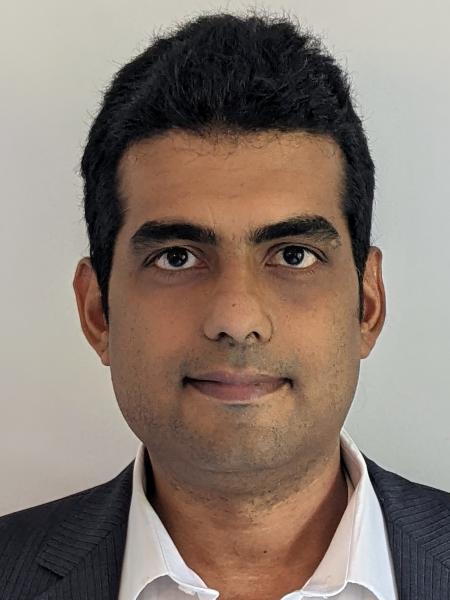STAC Summit, 30 May 2024, Chicago
STAC Summits bring together CTOs and other industry leaders responsible for solution architecture, infrastructure engineering, application development, machine learning/deep learning engineering, data engineering, and operational intelligence to discuss important technical challenges in trading and investment.
Agenda
Click on the session titles to view the slides.

STAC update: AI |
|
|
Jack will provide a preliminary look into STAC-AI™, an LLM benchmark suite guided by the priorities of financial firms, which measures a full solution stack -- from the model to the metal™ |
Two birds, one (special) stone: Unifying FinHPC and GenAI  |
|
|
Financial firms rely upon HPC architectures to develop and backtest trading strategies, calibrate models, and calculate risk. Fast time to market requires fast compute. So does GenAI, which many firms see as a powerful new way to inform strategies or risk management from unstructured data. In this talk, Prabhu will argue that a single architecture can satisfy both financial HPC and GenAI—as long as it has certain key properties like seamless CPU-GPU integration. As evidence, Prabhu will present use cases from financial firms and ISVs like Murex and KX, explaining how they benefit from massive compute, unified memory, and low-latency interconnects for heterogeneous compute. |
STAC update: Risk computing  |
|
|
Jack will present the latest Council activities and benchmark results involving derivatives risk computation. |
STAC update: Tick analytics  |
|
|
Jack will present the latest Council activities and benchmark results for deep time-series analytics. |
Surfing the gravity wells: Risk & trading analytics in an AI- and hyperscaler-dominated tech universe  |
|
|
Banks and hedge funds require more compute, storage, and networking to meet increasing demands for trading and risk analytics. Data volumes continue to balloon, regulations require more simulations, and new market opportunities require new analytics. However, generative AI and cloud have famously become "gravity wells" for the IT industry, driving its product roadmaps. On the one hand, this may increase the options available for financial HPC and data-intensive workloads, driving down long-term costs. On the other hand, AI and hyperscaler architectures can differ in important ways from those of today's trading and risk analytics, which presents challenges. To what extent can the finance industry benefit from the new products coming forth? How much longevity is left in existing approaches? Are there opportunities (or even imperatives) for trading and investment firms to rethink how they design their applications and infrastructure? |
STAC Update - Fast Data & Compute  |
|
|
Jack will discuss the latest Council activities and test results relating to 1) low-latency LSTM inference on market data and 2) network stacks in the cloud and on the ground. |
Big distances, tiny tolerances: Making time sync precise over a wide area |
|
|
Building a time-synchronization network spanning multiple data centers within a metropolitan area is a formidable challenge, particularly when the requirements include fault tolerance, nanosecond accuracy, and traceability to UTC(NIST). Quincy Data undertook this challenge, using White Rabbit in Chicago and New Jersey to synchronize across the major trading venues and using GNSS to connect these metros into a single clock domain. Come to hear Mike explain some of the problems Quincy encountered in design and implementation and how they overcame them. |
Staying cool at speed: Adding 25G to HFT accelerators |
|
|
Supporting 25G Ethernet can reduce the latency of FPGA or ASIC algorithms--but only if it is implemented well. Signal integrity, power, and thermal challenges exist all the way from the 25G IP, through the package, and across the PCB. In this talk, Ken will explore these challenges and present methods to analyze and resolve them so that you can achieve cool speed with 25G. |
Threading the needle: Navigating constraints to compete in real time |
|
|
To stay in the game, trading firms must manage ever-growing data rates and keep their architectures competitive, whether it’s making software faster or hardware smarter. But mounting requirements for regulation, compliance, and cyber are straining resources. Meanwhile, finding well-trained talent is only getting harder. What are the best strategies to navigate these constraints? What are the best buy/hold/sell strategies for technologies across the spectrum, from FPGA and ASIC to private clouds? Where does it make sense to buy third-party logic today? Our panel of experts will weigh in. |
About STAC Events & Meetings
STAC events bring together CTOs and other industry leaders responsible for solution architecture, infrastructure engineering, application development, machine learning/deep learning engineering, data engineering, and operational intelligence to discuss important technical challenges in financial services.
 |
 |
 |
|---|---|---|
Event Resources
Speakers
Jerry NelliganXR Trading
 Kevin DarbyCQG Inc
Kevin DarbyCQG Inc
 Daniel WisehartCubist Systematic Strategies
Daniel WisehartCubist Systematic Strategies Eric PowersCiti, STAC Fellow
Eric PowersCiti, STAC Fellow
 Matt CertosimoAMD
Matt CertosimoAMD Sanjay BasuOracle
Sanjay BasuOracle
 Bob StephensDell Technologies
Bob StephensDell Technologies Prabhu RamammorthySupermicro
Prabhu RamammorthySupermicro
 Attila NarinOracle
Attila NarinOracle Brian EvansDDN
Brian EvansDDN
 Robert GlanzmanPure Storage
Robert GlanzmanPure Storage Michael McGuirkAMD
Michael McGuirkAMD
 Kevin FormbyKeysight
Kevin FormbyKeysight Patrick EganShengli Technologies
Patrick EganShengli Technologies
 Mike SchonbergQuincy Data
Mike SchonbergQuincy Data Ken WillisCadence
Ken WillisCadence
 Wade ZylkeHammerspace
Wade ZylkeHammerspace Ryan RonnanderLINBIT
Ryan RonnanderLINBIT
 Mat YoungScaleFlux
Mat YoungScaleFlux Liz CorriganMyrtle.ai
Liz CorriganMyrtle.ai
 Nate BradacAdaptive
Nate BradacAdaptive Scott FeagansOptions Technology
Scott FeagansOptions Technology
 James LuptonBlackcore Technologies
James LuptonBlackcore Technologies Tom CoombsOrthogone
Tom CoombsOrthogone
 Cliff MaddoxNovaSparks
Cliff MaddoxNovaSparks Vahan SardaryanLDA Technologies
Vahan SardaryanLDA Technologies


 Laurent de BarryExegy
Laurent de BarryExegy Ciaran KennedyFMAD Engineering
Ciaran KennedyFMAD Engineering Jack GiddingSTAC
Jack GiddingSTAC
















